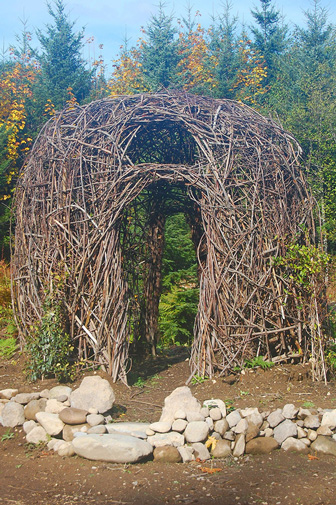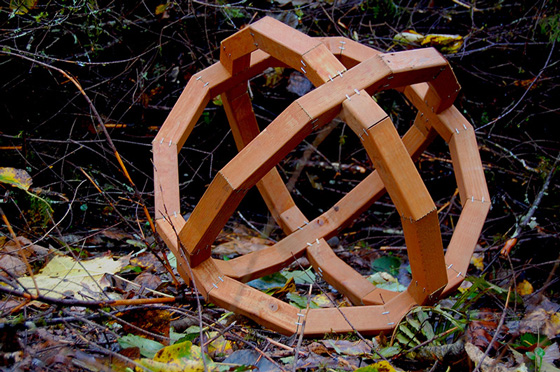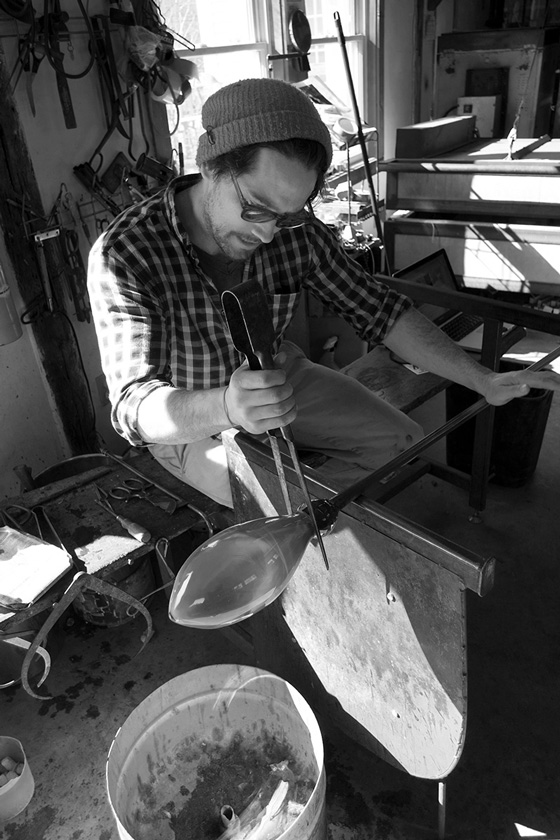Sculpting a creative life in rural Vermont

Matthew Donaldson (Fine Arts, 2009) studied sculpture as a student at Columbus College of Art & Design. Now he balances art, agriculture, homesteading, and community in the tiny town of West Townshend, Vermont. It’s a life literally off the beaten path and proof that a rewarding art career can happen anywhere.
When you were a student at CCAD, what did you think your professional life would look like?
As a student, I knew I would always create, but it took me while to find my place and purpose for creating. CCAD gave me a foundation for design. Farming in Vermont gave me specific details to draw from. A major difference that changed the way I sculpt came from working cooperatively with others. I work in a community full of artists, carpenters, and farmers, and we are constantly trading ideas.

What drew you to art school in the first place?
I am, first and foremost, a maker. I never questioned going to art school. I use concepts I learned in design and apply them to agriculture all the time and vice-versa. I sculpt to attract attention to the beauty that comes when we are connected to our world.
Did you grow up on a farm or in an agricultural setting?
I didn’t grow up on a farm, but my summers were spent on a farmstead visiting family in Kentucky. Farming has always been a part of my life, distant but always in the back of my mind. Only in the past five years have I been able to bring it closer. Agriculture is an essential part of life — I choose to keep it close and use its lessons for inspiration in my sculpture.
Do you have a typical day? What does that look like?
I would love to say I wake up with the sun, milk cows, and then [head] into the studio to make sculpture. How romantic … but it ain’t that easy. The farming I do is done in a community setting — like the way I make sculpture. Our small mountain town in Vermont runs largely on support of one another. One day, I run the dairy. The next, I’m in the glassblowing studio working on commissions. Other days, I work on my homestead or in the woodshop. My schedule can be chaotic, but I find balance through variety.

How has your sculpture practice evolved since you left CCAD? How do you find the time and space to practice?
To me, sculpture is about an object’s relation to space, and my practice is about placing myself in spaces that allow room for growth. I look at the details in growth processes and embellish subtleties that mostly go unnoticed. Scale is a tool I often use to exaggerate my forms—for example, enlarging a bird’s nest into the size of a gazebo or a seedpod to the size of a football.
My work really evolved when I started to work more collaboratively. When working with glass I usually work in teams, and it’s like dancing with a partner. Most of the wood I use is harvested locally, and I work with a local mill for boards when making furniture.
I love the directness of both glass and wood; I only need a few tools to manipulate each material. I work in a similar way when planting seeds or weeding. I try to work with wood and glass like a fluid conversation: The tone may change, and I have to be ready to react.

________
Read more in our series CCAD Means Success.
________
Learn more about CCAD or apply here.